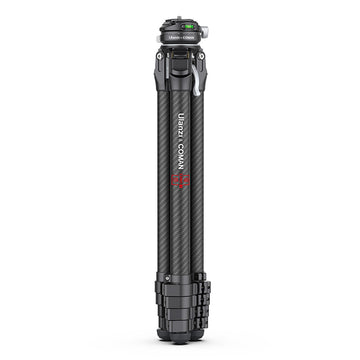Unlock the Secrets to Flawless Cinematic Shots: Where to Snag the Best Stabilizing Gear!
Unlock the Secrets to Flawless Cinematic Shots: Where to Snag the Best Stabilizing Gear!
Cinematography is an art that requires not only creativity but also the right tools to bring visions to life. One of the most critical pieces of equipment in a filmmaker's arsenal is stabilizing gear. Without it, filmmakers face the challenge of shaky footage that can detract from storytelling and viewer engagement. Imagine capturing a breathtaking landscape shot only to have it marred by unwanted jitters. This makes stabilization equipment essential for achieving professional-quality results. In this article, we will explore the importance of cinematography stabilizing equipment, delve into the various types available, and guide you on where to purchase or rent this vital gear.

The Importance of Stabilization in Cinematography
Stabilization is fundamental in cinematography because it directly affects how viewers experience the footage. Smooth, steady shots allow the audience to focus on the story being told rather than the distractions of camera movement. Unstable footage can create a sense of unease and disorientation, which is particularly detrimental in narrative films. For instance, action sequences, where rapid movements are expected, benefit immensely from stabilization to maintain clarity and coherence. Similarly, establishing shots that showcase vast landscapes or intricate details require a steady hand to capture the beauty without distortion. It's not just about aesthetics; stabilization can also enhance emotional storytelling, allowing viewers to connect with the characters and their journeys more profoundly.
Types of Stabilizing Equipment
There are several types of stabilizing equipment, each designed to address specific cinematographic needs. Gimbals are among the most popular choices today, utilizing motors and sensors to keep the camera steady while allowing for fluid movement. They're particularly useful for dynamic shooting scenarios, like moving through a crowd or capturing fast-paced action. Steadicams, which have been a staple in the industry for decades, employ a counterbalance system to smooth out the camera's motion. They're ideal for longer takes, offering the versatility to walk and film simultaneously without losing stability. Shoulder rigs, on the other hand, provide a more hands-on approach, allowing filmmakers to anchor the camera to their body for stabilization. This setup is perfect for documentary filmmakers or those who prefer a more tactile connection with their equipment. Each type of stabilizer serves a distinct purpose, and understanding their functions is key to choosing the right one for your projects.
Manual vs. Electronic Stabilizers
When it comes to stabilization, filmmakers often find themselves weighing the benefits of manual versus electronic options. Manual stabilizers, like shoulder rigs, offer a more traditional approach, demanding skill and practice to master. They provide a sense of control that many seasoned filmmakers appreciate; however, they can require a steep learning curve for beginners. On the other hand, electronic stabilizers, such as gimbals, simplify the process with built-in technology that compensates for camera movement. They are often easier to use, making them an attractive option for those new to cinematography. However, they can be heavier and require batteries, which adds another layer of complexity. Ultimately, the choice between manual and electronic stabilizers boils down to personal preference, the specific demands of the shoot, and the filmmaker's skill level.
Where to Purchase Stabilizing Equipment
When it comes to acquiring stabilizing equipment, filmmakers have several options at their disposal. Online retailers offer a vast selection of gear, often with the convenience of home delivery. This route allows for extensive research, comparison shopping, and access to customer reviews, which can be invaluable when making a decision. However, one downside is that purchasing online means you can't physically test the equipment before buying. Physical stores, on the other hand, provide the chance to hold and try out gear, facilitating a more informed purchasing decision. Yet, they may have limited stock and higher prices due to overhead costs. Additionally, rental services offer an excellent alternative for filmmakers who may not want to commit to buying equipment outright. Renting allows you to test different stabilizers and find what works best for your style without a significant investment. Each purchasing channel has its own pros and cons, so it's wise to consider your needs and preferences before making a choice.
Considerations When Buying Stabilizing Equipment
Before purchasing stabilizing equipment, there are several factors to keep in mind to ensure you make the right choice. First, establish your budget, as stabilizers can vary widely in price. Consider the types of projects you typically undertake; a lightweight gimbal may suffice for a travel vlog, while a more robust steadicam could be necessary for narrative filmmaking. Compatibility with your existing gear is also crucial; make sure the stabilizer can support the weight and size of your camera. Lastly, think about the learning curve associated with each type of stabilizer. If you're new to cinematography, you may prefer an electronic option that simplifies usage, while seasoned filmmakers might opt for a manual stabilizer that offers greater control. Taking these considerations into account will help you choose the best stabilizing equipment for your filmmaking journey.
Final Thoughts on Cinematography Gear
In conclusion, cinematography stabilizing equipment plays a vital role in capturing smooth, professional-quality footage that enhances storytelling. With various types of stabilizers available, filmmakers must carefully consider their options and understand the implications of each choice. Whether purchasing online, browsing physical stores, or opting for rentals, the key is to find the right fit for your projects. By investing in quality stabilizing gear, you can elevate your filmmaking capabilities and create compelling visual narratives that resonate with your audience.
- Formazione
- Course
- Books
- Drawing
- Question
- Film
- Fitness
- Food
- Giochi
- Gardening
- Health
- Home
- Literature
- Music
- Networking
- Altre informazioni
- Programming
- Religion
- Shopping
- Sports
- Curriculm
- Wellness


